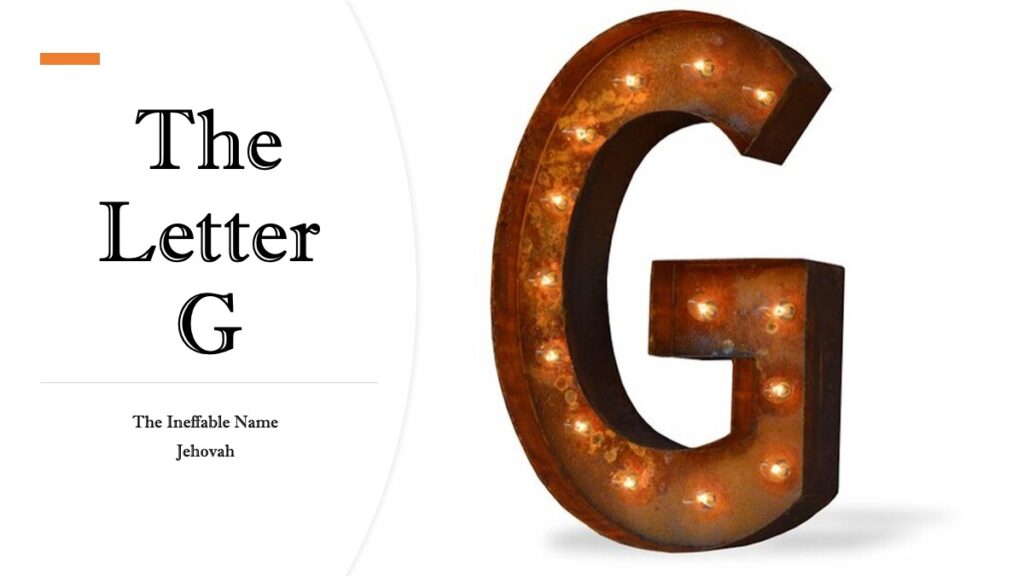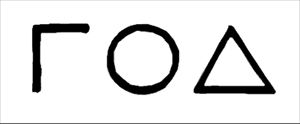
Many commentators on the antiquities of the craft say that the letter G that occupies the center of our distinctive emblem is merely a substitute for the Hebrew letter Yod, which, as the initial and representative of the ineffable name Jehovah, properly belongs there, but is replaced by G because the latter “is English.” It is also often stated that our own revered Deity name “God” is simply this letter Yod spelled with a G.
These statements in question are only surmises, not facts. The letter G is right, and it is just where it belongs, because the true Masonic cipher is the number 3 which is a gimel in Hebrew and gamma in Greek.
Read: What Does the G Stand For in Freemasonry
Ancient philosophy always viewed the Great Architect in three aspects as Creator, Preserver, and Transformer. Nothing, said they, was ever lost. Spirit and matter were coexistent and co-eternal. Matter was continually going in and out of perception, perishing apparently, in one form, only to be worked over into new forms in the vast laboratory of Nature. Everything in and about the lodge is in threes, expressive of the permanence and power of this great number. The three side of the Pythagorean triangle represented Osiris, the male or creative principle to the Egyptians; but, though the female principle was a four and the offspring a five, and these were three, even if you added 3, 4, and 5 together to make 12, for 1 plus 2 made three. This was the way the Pythagoreans reasoned, claiming, perhaps truly, that if we understood “number” we should understand everything in creation, because all nature was but a vast arithmetical process, made visible in harmonious forms determined according to number.
Pythagoras reduced all manifestation of form to squares, circles, and triangles. The Greek letter G (gamma) is in the form of a Mason’s square. The letter 0 is a circle, and the letter D (delta) a triangle, giving us the word “God.”
These are the numbers 3, 6, and 4 aligned; added together, a total of 13, but as 364 (13 times 28), the months of a lunar year, which was the origin of our 52 weeks of seven days each, adopted so that each day might be named for one of the seven known planets. All of the Hebrew deity names founded on the Ineffable Name were numerical multiples of 13. People were taught that this was an “unlucky” number, to keep them from investigating it.

Among the signs of the Zodiac, Gemini was the third sign, Cancer the fourth, and Virgo the sixth. In ancient Egyptian sculptures we often find representations of these three signs. Horns representing Gemini stretched upon a bier in mummy wrappings, and about to be raised to life by Isis (Virgo) standing at his head, and Nepthys (Cancer, the moon goddess) standing at his feet, the whole an allegory of the alternate perishing and reviving of Nature.
While a great many of the Semitic deity names have been accounted for as cabalistic expressions of the divine power, manifested in the continual metamorphoses of Nature, the successive returns of the seasons and the variety of scenes they display to the discerning eye, the great and sacred word, reverence to which is so deeply inculcated by Masonry, has no such historical record of its source or origin, like the word “Jehovah” communicated to Moses from the burning bush.
Philology teaches us, however, that the word “God” is an old Turanian or Scythian word for “year,” still surviving with its original meaning in the Slavonic Goda, a year.
The ancients had several computations of calendar years at various periods, so that the analogy between 364 and a name made of these number letters was according to the same philosophy, which turned 365 days 6 hours into JHVH by dividing each digit through the 30 degrees of the month.
Here is the manner in which the wonderful word, of such potent meaning to millions of human souls, has been entrusted to symbolism; so that so long as the symbols endure the Name committed to the adoration of the descendants of the great Indo-Germanic peoples shall not be lost.
The signs of the Zodiac, which astrology calls the “day houses of the planets,” enumerated from left to right, are as follows, so placed by the Chaldeans 3,000 years before the time of Abraham: Aquarius, Pisces, Aries, Taurus, Gemini, Cancer, and Leo. The planets attributed to these houses, in sequence, are Jupiter, Saturn, Mars, Venus, Mercury, Moon, Sun, which give their names to Thursday, Saturday, Tuesday, Friday, Wednesday, Monday, Sunday, the numbers of which, as days of the week, in order given, are 5, 7, 3, 6, 4, 2, 1.
A cube or square block,-wood, stone, or other material; geometrically regarded, has six sides. If we consider two such and add the numbers of the sides of the first, 1, 2, 3, 4, 5, 6, their total is 21. Adding the sides of the second (7, 8, 9, 10, 11. 12), the total is 57.
57 – 364 – 21
So our sequence of numbers will convey the idea of two cubes, one at the right and one at the left, with, suspended between them, the number 364, in Hebrew letters GOD.
If we push the idea a little further,-and it certainly has a far greater extension than here given,-the two numbers 21 and 57 added together amount to 78, which is three times 26, or three times JHVH, which the ancient Hebrews made to express the phrase He that was, He that is, and He who ever shall be.

Contents – The Beginning of Masonry
Previous – Origin of the Sabbath
Next – The East
